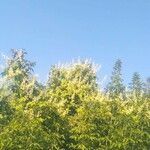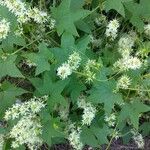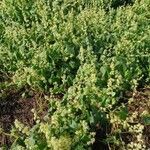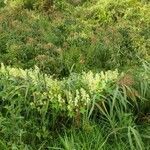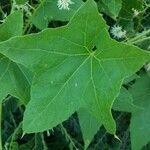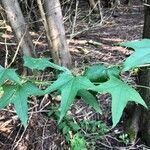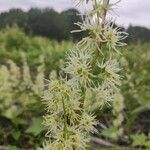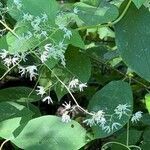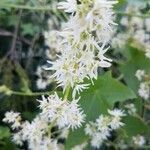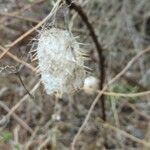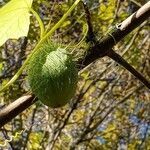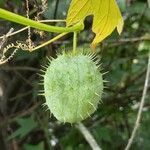Leaves: petiole 1–4 cm; blade 2–8(–12) cm, lobe apex acute, sinuses rounded, surfaces glabrous or slightly scabrous, hair bases pustulate. Inflorescences: staminate racemes 8–14 cm; pistillate peduncles 2–5 cm. Flowers lightly fragrant; corolla 8–12(–16) mm diam. Pepos 3–5 cm, spinules 4–6 mm, glabrous or slightly scabrous. Seeds 12–20 mm. 2n = 32.
A creeping herb or vine. It can grow 8 m long. Flowers are separately male or female on the same plant.
